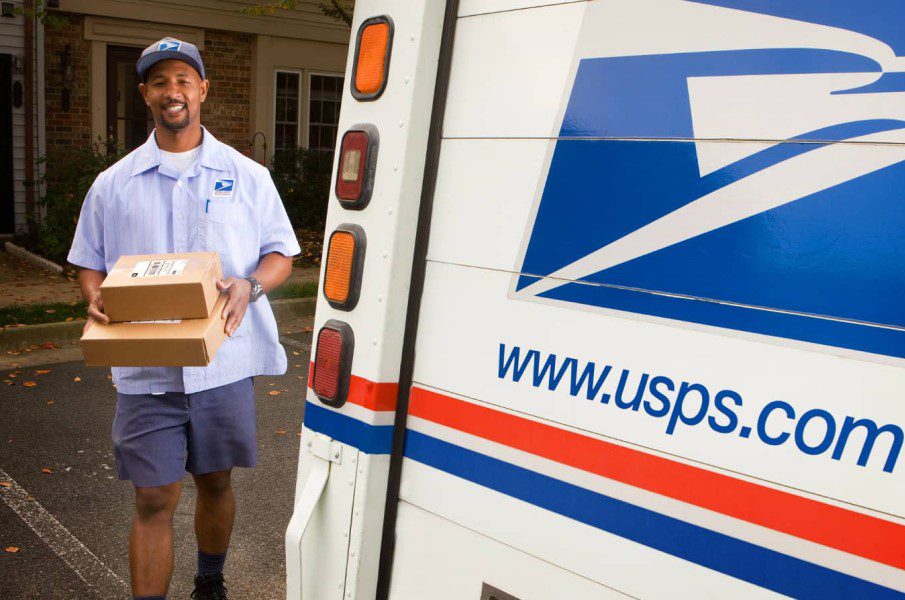Overcome Crisis for Survival: The Tumultuous Journey of The U.S Postal Service
The United States Postal Service is an independent agency of the executive branch of the United States federal government responsible for providing postal service in the United States, including its insular areas and associated states. It is one of the few government agencies explicitly authorized by the United States Constitution.
Americans had just embraced the latest innovation from what was then called The United States Post Office Department: for the first time, letter carriers were carrying packages too. Several families apparently decided this was a good way to transport children. The Postmaster General received a letter in 1913 inquiring about the appropriate way to wrap a baby; the customer noted that the Post Office was more trustworthy than the privately owned companies it competed against, which would be too “rough in handling.”

The Postal Service is legally obligated to serve all Americans, regardless of geography, at uniform price and quality. The Post Office has exclusive access to letter boxes marked “U.S. Mail” and personal letterboxes in the United States, but has to compete against private package delivery services, such as United Parcel Service, FedEx, and Amazon.
Over the course of more than 250 years, the U.S. Postal Service has gone through many shifts to keep up with technology and culture – including switching its focus from newspapers to letters to package delivery service. That flexibility has kept the institution relevant and solvent in the face of change.
How Did the U.S Postal Service Build National Solidarity Through Its Service?
In forming the Post Office, the Founding Fathers had wanted a service that would bind together the scattered populous of the new United States. It was, in other words, a tool of nationalism. Over the course of two centuries, the agency would drive the expansion of roads and transit, strengthen the nation’s connections with its rural communities, and brave all conditions to bring packages to citizens’ front doors.
Literally, The Post Office helped build an empire. Though postal routes had been established in the colonial era – most notably under Benjamin Franklin, who had been a royal postmaster and later became the first U.S. Postmaster General during the American Revolution – the system expanded under the new nation.
The growing need for contractors who could carry the mail across all those roads also spurred the growth of private businesses, including cross-country travel lines. The Post Office often gave mail contracts to stagecoach lines, rather than to faster and cheaper horseback riders, in order to promote the nascent passenger transportation network for the new nation. Later, the Post Office did the same for private steamboats and railroads, even airlines – a practice that continues today.
In its early years, the Post Office focused on delivering newspapers to keep Americans informed and connected. To keep newspaper subscriptions cheap and accessible, the Post Office subsidized their distribution by charging exorbitant prices for letter postage—as much as a full-day’s wages, which meant the cost of mail was largely supported by merchants.
The Efficient and Inefficient Business-Service Operation of the U.S Postal Service
The Post Office has been fantastically good at operational improvements. Literally billions of items are processed every week, about 700 million mail pieces per day; picked up, sorted and distributed across one of the physically largest countries in the world. Compare that to Pony Express pricing and adjusted for inflation you will be hard pressed to find any business that has continually improved its service, at ever lower (constantly declining when adjusted for inflation) prices.
And while AMR is filing bankruptcy largely to force a new union contract, the Post Office has accomplished its record improvements with an almost entirely union workforce.

Executive compensation is surprisingly low. The CEO makes about $800,000/year. Competitor CEOs make much more. At FedEx (the Post Office delivers more items every day than FedEx does in a whole year) the CEO made over $7,400,000, and at UPS (the Post Office delivers more items each week than UPS does annually) the CEO made $9,500,000. So, despite this remarkable effectiveness, the CEO makes only about 1/10th CEOs of much smaller delivery organizations.
The Post Office understands what it must do and does it extremely well. It knows its hedgehog concept and relentlessly pursues it to unparalleled performance. Yet, it is barred from raising prices, is losing money, and is now planning to close 3,700 locations and dramatically curtail services – such as overnight and Saturday delivery – in a radical cost reduction effort.
#1: How Does the U.S Postal Service Work?
USPS’s mission is to provide affordable mail and package delivery services to everywhere in the United States, no matter how remote or far-flung.
While the Postal Service is a government agency, it does not run off of taxpayer money, and operates entirely off of revenues from mail and package delivery as well as the other services it offers. It employs over half a million people, including 100,000 US military veterans.
Package delivery is an increasingly important and financially successful part of its model, and it has contracts with online retailers and e-commerce companies like Amazon to provide “last mile” shipping for its packages.

In recent months, the continued success of package delivery and substantial increases in package volume the agency is processing over 2019 levels has helped soften the blow of the sharp decline in first-class mail and improved the agency’s financial outlook.
The significant decline in Americans using the Postal Service due to the pandemic accelerated the years-long reductions in first-class mail volume, which has fallen by over 30% in the past decade, and only exacerbated existing financial woes which were caused in part by Congress.
The Postal Service is especially burdened by 2006 federal legislation, the Postal Enhancement and Accountability Act, that required it to prefund all current and former employee retirement and health benefits in advance as opposed to a “pay as you go” system. The service saw its annual net losses double to $8.8 billion in 2019, and it currently has $160 billion in unfunded liabilities to those pre-paid pension and health plan obligations, according to the Washington Post.
The Postal Service now projects that it will run out of money by April 2021 if package volume returns to pre-pandemic levels and by October 2021 if package volume stays at 15% above pre-pandemic levels, Federal News Network reported.
#2: How Does the U.S Postal Service Mitigate Its Declining Mail Volume
First-class mail volume peaked in 2001, declining by 43% as of 2017 due to the increasing use of email and the World Wide Web for correspondence and business transactions.
Private courier services, such as FedEx and United Parcel Service (UPS), directly compete with USPS for the delivery of urgent letters and packages.
Lower volume means lower revenues to support the fixed commitment to deliver to every address once a day, six days a week. According to an official report on November 15, 2012, the U.S. Postal Service lost $15.9 billion its 2012 fiscal year.
The U.S. Postal Service is continually improving its efficiency by making better use of space, staffing, equipment, and transportation in processing the nation’s mail. This practice has become increasingly important as it has experienced a significant reduction in the amount of single-piece First-Class Mail that enters its system.

Faced with a massive nationwide infrastructure that is no longer financially sustainable, the U.S. Postal Service is implementing Network Rationalization. The Network Rationalization Initiative is the multi-phase, multi-year effort announced in 2011 to balance mail processing infrastructure costs against current and anticipated mail volumes and to successfully right-size the postal processing network.
Significant declines in overall First-Class Mail volume and revenues which fund postal operations have required that the Postal Service business model be adjusted to ensure that the network of processing facilities, transportation routes, and other interconnected infrastructure operates with greater efficiency than ever before. Area Mail processing is a key element of this important effort.
#3: The U.S Postal Service’s Efforts to Weather Its Internal Streaming and Delivery Slowdown
In response, the USPS has increased productivity each year from 2000 to 2007, through increased automation, route re-optimization, and facility consolidation. Despite these efforts, the organization saw an $8.5 billion budget shortfall in 2010, and was losing money at a rate of about $3 billion per quarter in 2011.
On December 5, 2011, the USPS announced it would close more than half of its mail processing centers, eliminate 28,000 jobs and reduce overnight delivery of First-Class Mail. This will close down 252 of its 461 processing centers. As of May 2012, the plan was to start the first round of consolidation, pause from September to December, and begin a second round in February 2014; 80% of first-class mail would still be delivered overnight through the end of 2013. New delivery standards were issued in January 2015, and the majority of single-piece (not presorted) first-class mail is now being delivered in two days instead of one. Large commercial mailers can still have first-class mail delivered overnight if delivered directly to a processing center in the early morning, though as of 2014 this represented only 11% of first-class mail. Unsorted first-class mail will continue to be delivered anywhere in the contiguous United States within three days.
#4: The Black Hole in Operational Improvements of the U.S Postal Service
In July 2011, the USPS announced a plan to close about 3,700 small post offices. Various representatives in Congress protested, and the Senate passed a bill that would have kept open all post offices farther than 10 miles (16 km) from the next office.
In May 2012, the service announced it had modified its plan. Instead, rural post offices would remain open with reduced retail hours (some as little as two hours per day) unless there was a community preference for a different option.
In a survey of rural customers, 54% preferred the new plan of retaining rural post offices with reduced hours, 20% preferred the “Village Post Office” replacement (where a nearby private retail store would provide basic mail services with expanded hours), 15% preferred merger with another Post Office, and 11% preferred expanded rural delivery services. Approximately 40% of postal revenue already comes from online purchases or private retail partners including Walmart, Staples, Office Depot, Walgreens, Sam’s Club, Costco, and grocery stores. The National Labor Relations Board agreed to hear the American Postal Workers Union’s arguments that these counters should be manned by postal employees who earn far more and have “a generous package of health and retirement benefits.”
#5: The U.S Postal Service’s Slow Adaptability in Digital Era
It may seem like the United States Postal Service is unwilling to adapt to a world of declining mail volume and increased digital communication. But the real obstacle in the way of true reform aren’t the folks running the postal service itself. It’s their bosses in the U.S. Congress.
Postmaster General Patrick Donahoe is like a man waiting for a package that never arrives. Donahoe, who has led the U.S.P.S. since 2010, has over the past few years made numerous proposals to get the money-losing postal service back in the black. He’s suggested closing post offices, modernizing post offices, “village” post offices, increased postal rates, decreased services, a reduced workforce, and a number of digital approaches involving tracking packages, QR codes, and mobile solutions.

But there is only so much the Post Office can do on its own to reduce the billions it loses every year. Congress holds all the cards, and that became increasingly clear this week. If the U.S.P.S. is ever going to break even, Congress will need to pass some comprehensive reform legislation.
In February, Donahoe announced that the postal service would eliminate Saturday delivery, essentially challenging Congress to specifically require 6-day delivery. But last month, Congress passed a continuing resolution prohibiting 5-day delivery. Afterwards, a Government Accountability Office report stated that current law required the post office to deliver six days a week, and the U.S.P.S. board of governors decided Wednesday to “delay implementation of its new delivery schedule until legislation is passed that provides the Postal Service with the authority to implement a financially appropriate and responsible delivery schedule.”
The U.S Postal Service Crisis During COVID-19 Pandemic
The crisis stems primarily from changes implemented by Postmaster General Louis DeJoy shortly after taking office in June 2020. The delays have had substantial legal, political, economic, and health repercussions.
There is controversy and speculation about whether the delays are unintended consequences of restructuring operations, or if they were intentionally created for political and/or financial gain. DeJoy has supported and donated to President Donald Trump, who has declared his intentions to limit the Post Office’s effectiveness in order to restrict voting by mail in the 2020 elections.

The USPS has had a history of budget deficits dating back to a 2006 law requiring it to prepay retiree health benefits 75 years in advance, a provision to which no other government agency or private corporation is subject. This law, the Postal Accountability and Enhancement Act, was passed during a lame-duck session, and shepherded through the Senate by Senator Susan Collins of Maine. The agency’s struggles were compounded by the financial crisis of 2007–2008 and subsequent recession, which caused overall mail volume to fall by one-third, and again by the COVID-19 pandemic and its economic effects.
The sharp reduction in mail delivery caused by the pandemic initially threatened to plunge the agency into even more dire straits, with the Postal Service reporting $2.2 billion in net losses in 2020’s third quarter.
Trump, who has been hostile to the idea of expanding vote by mail, is opposed to any measures to help the Post Office. He has refused to sign the CARES Act stimulus package if it included a bailout for the agency, The Washington Post reported in April.
While the stimulus bill extended the Postal Service greater flexibility to borrow up to $10 billion from the federal government subject to Treasury Department approval, it didn’t extend the agency any emergency government funding or forgive $11 billion in outstanding debt to Treasury, two of the measures that congressional Democrats called for.
The Post reported that while Congress initially came to an agreement on giving the Postal Service a $13 billion grant, Treasury Secretary Steve Mnuchin quashed the grant, telling lawmakers, “You can have a loan, or you can have nothing at all.”
Amid growing concerns that financial strains and operational changes could put November’s mail-in ballots at risk, House Democrats passed a bill on Saturday that would send $25 billion in funds to the ailing agency and block the postmaster general’s controversial, cost-cutting initiatives. But the bill will likely stall in the Republican-controlled Senate.

The Postal Service, for its part, voluntarily suspended the changes until after the election, and insists that it is equipped to handle the forthcoming flood of mail-in ballots.
As far as a bailout is concerned, John wonders whether politicians can put a price on democracy – referring to concerns that, without the post office running at full steam, the legitimacy of November’s election could be called into question.
“We do have a pretty good gig going here, going back to the 18th century, and I’d like to see it prosper for a few decades longer,” John said. “And beyond that, who knows.”









